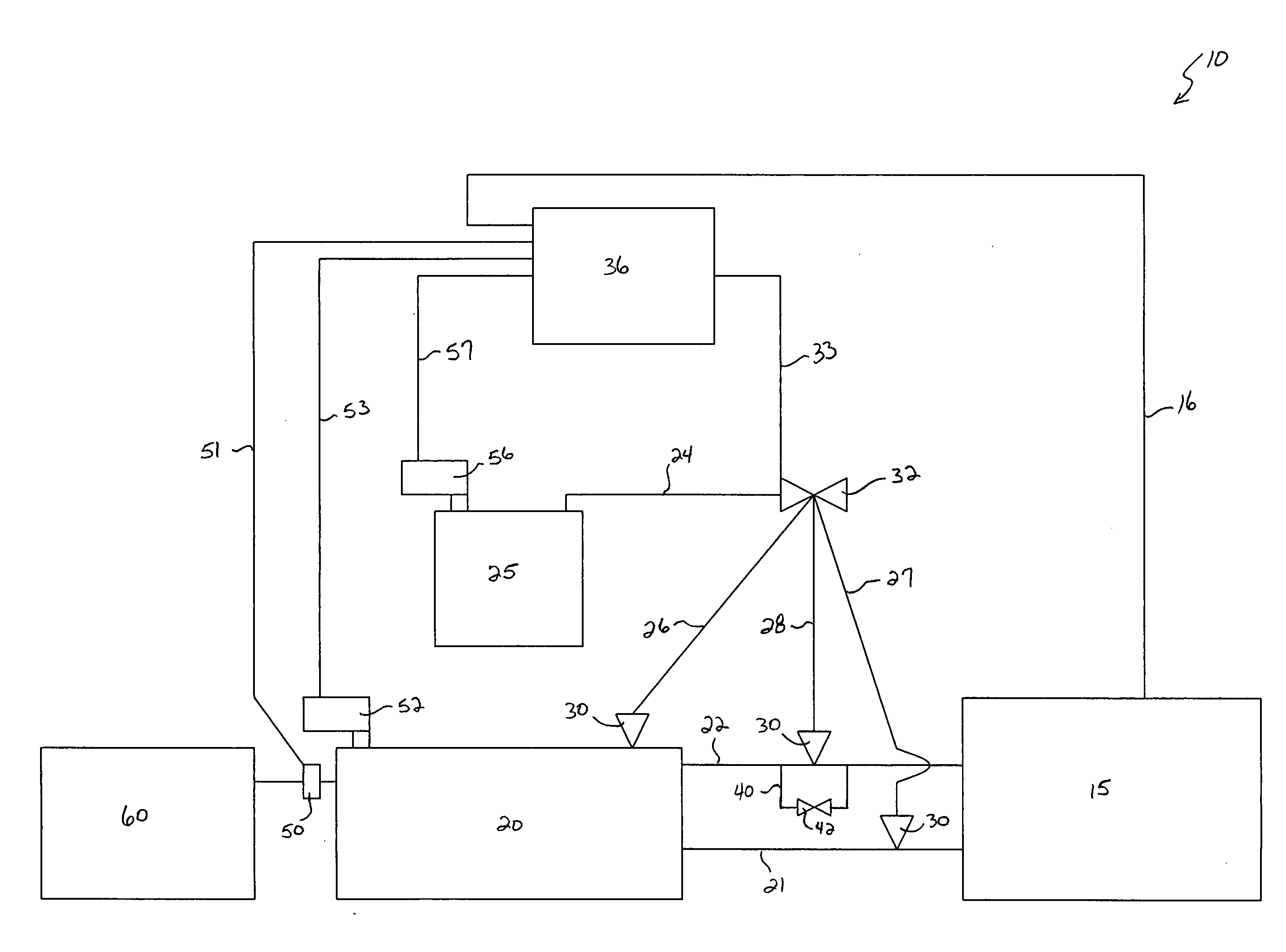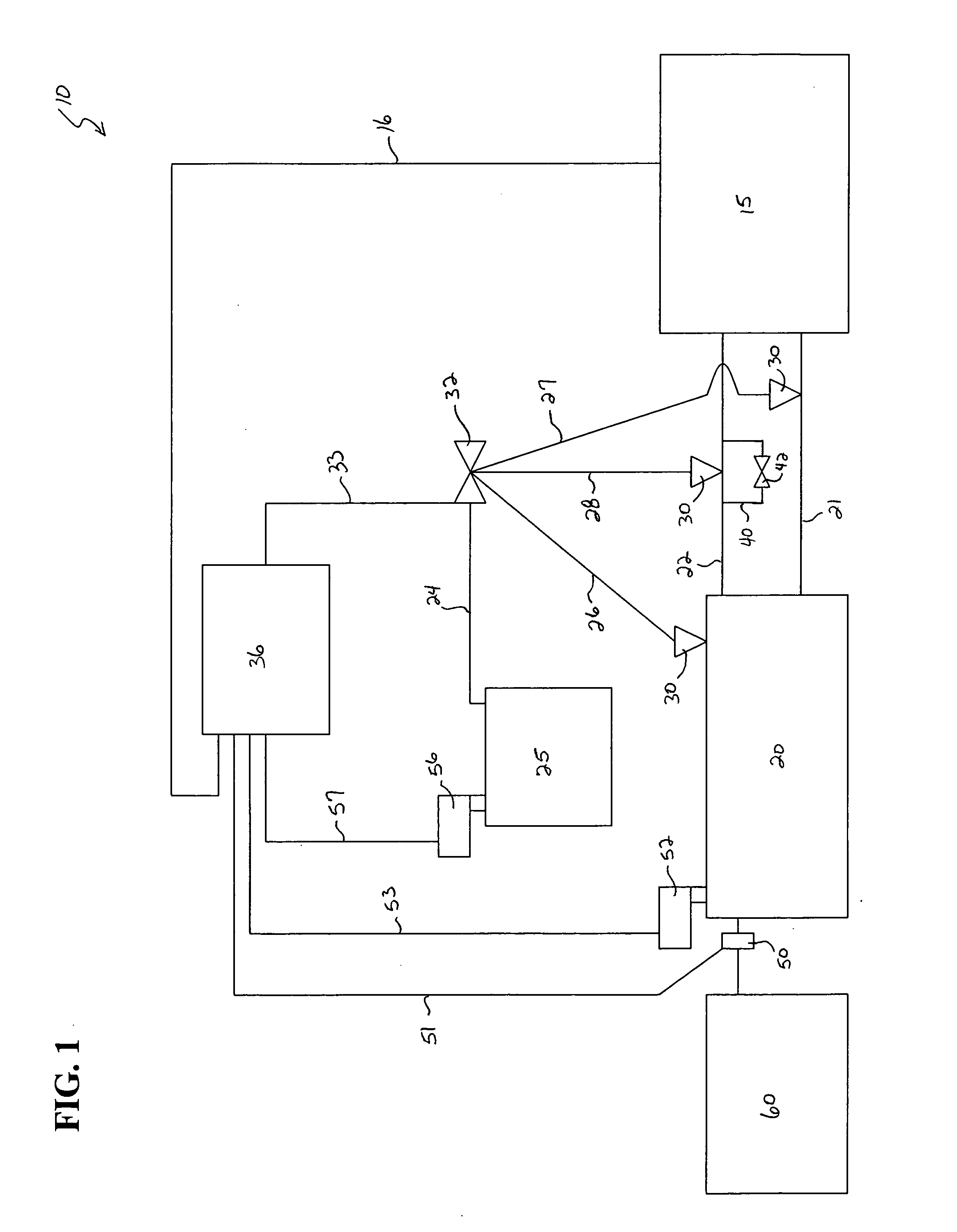On-board fuel additive injection systems
a fuel additive and injection system technology, applied in liquid fuel feeders, machines/engines, mechanical equipment, etc., can solve the problems of reducing the performance of the engine, harming the engine itself, and adding in excess of the critical range, so as to improve the quality and performance of the fuel. , the effect of high accuracy and flexibl
- Summary
- Abstract
- Description
- Claims
- Application Information
AI Technical Summary
Benefits of technology
Problems solved by technology
Method used
Image
Examples
Embodiment Construction
[0020] Referring now to FIG. 1, one specific embodiment of the fuel additive system of a vessel is disclosed. Broadly, fuel additive system 10 includes internal combustion engine 15, fuel storage tank 20, and fuel additive reservoir 25. Internal combustion engine 15 is in fluid communication with fuel storage tank 20 by fuel supply line 21 and, preferably fuel return line 22. As persons of ordinary skill in the art will recognize, certain internal combustion engines 15, such as those utilized in marine vessels and locomotives, do not burn all of the fuel that enters internal combustion engine 15. Accordingly, such internal combustion engines 15 include fuel return line 22 to transport unburned, or unspent, fuel back to the fuel storage tank 20.
[0021] Fuel additive reservoir 25 is in fluid communication with one, two, or all three of fuel storage tank 20 (through injection line 26), fuel supply line 21 (thorough injection line 27), and / or fuel return line 22 (through injection line ...
PUM
 Login to View More
Login to View More Abstract
Description
Claims
Application Information
 Login to View More
Login to View More - R&D
- Intellectual Property
- Life Sciences
- Materials
- Tech Scout
- Unparalleled Data Quality
- Higher Quality Content
- 60% Fewer Hallucinations
Browse by: Latest US Patents, China's latest patents, Technical Efficacy Thesaurus, Application Domain, Technology Topic, Popular Technical Reports.
© 2025 PatSnap. All rights reserved.Legal|Privacy policy|Modern Slavery Act Transparency Statement|Sitemap|About US| Contact US: help@patsnap.com


